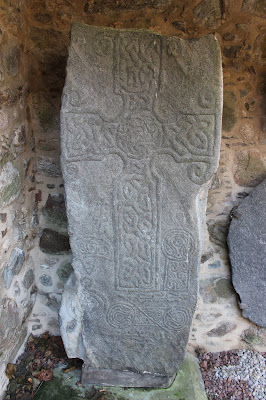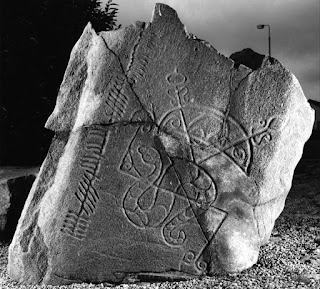The Pictish stones at Dyce

The Class II Pictish stone at Dyce On the southern bank of the River Don in Aberdeenshire, at a place called Dyce, there are two Pictish stones. They are found in the ruined chapel of St Fergus. One of the stones is a Class I stone dated to around the 5 th /6 th centuries, whereas the other is a Class II stone dated to around the 7 th /8 th centuries. The Class I stone includes two symbols - a Pictish beastie and a double disc and Z rod. The Class II stone includes a Christian cross, four symbols and Ogham script on the side of the stone. This post will focus on the Class II stone. The stone probably commemorates two individuals as there are two symbol pairs – the crescent moon and V rod and a triple disc and the double disc and Z rod and mirror case. The Ogham script reads - EOTTASSARRHETODDEDDOTS MAQQ ROGODDADD Like the Ogham script on the Brandsbutt stone, there are very few interpretations as to what this means. It clearly refers to an individual who is the son of Rogodadd.
